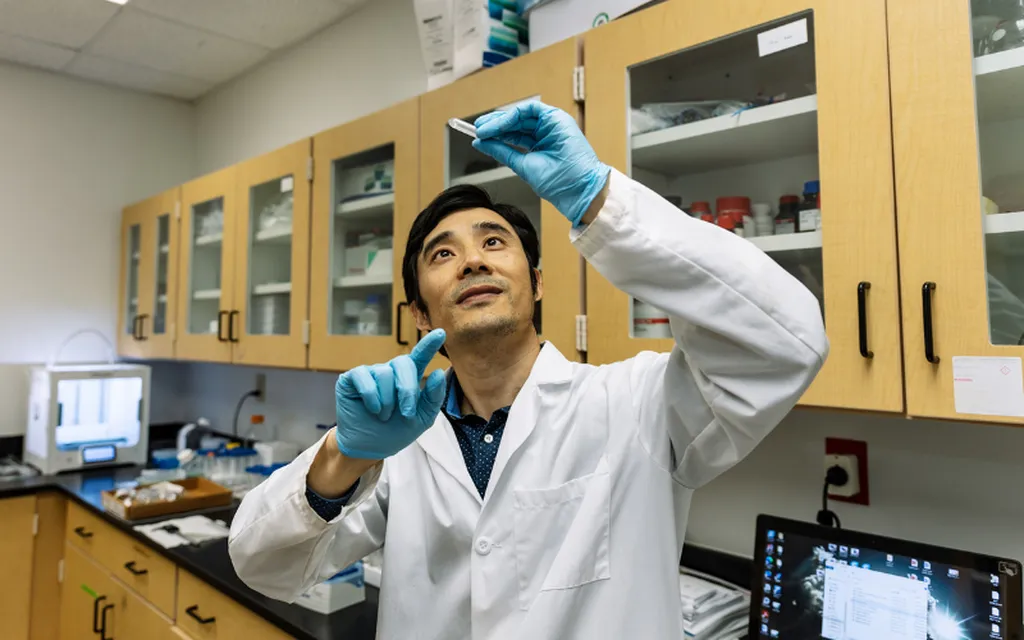In a groundbreaking development that could revolutionize bone regeneration, researchers have successfully mimicked the complex structure and function of ossification centers, the very foundation of bone development. The study, led by Jingtao Xu from the Department of Orthopaedic Surgery at the First Affiliated Hospital of Chongqing Medical University, introduces injectable biomimetic heterogeneous short-fiber microspheres (ZnCaP@NF-GF) that could transform bone tissue regeneration.
The challenge of replicating the biologically heterogeneous structure of ossification centers has long perplexed scientists. However, Xu and his team have made significant strides by creating inorganic/organic composite zinc-doped calcium phosphate-mineralized microspheres. These microspheres are highly entangled with short fibers, mimicking the extracellular matrix, and are dynamically self-assembled with the growth factor PDGF-BB. The result is an injectable biomimetic structure that closely resembles the natural environment necessary for bone tissue regeneration.
“The unique fibrous network on the surface of ZnCaP@NF-GF enables long-term anchoring in bone-defect regions through extracellular matrix interactions,” explains Xu. This anchoring is crucial for the sustained release of calcium and zinc ions, which play pivotal roles in recruiting endogenous stem cells and promoting their osteogenic differentiation. The study highlights the sustained release of calcium ions significantly induces stem cells’ osteogenic differentiation via the MAPK/ERK signaling pathway, while zinc ions promote the generation of new vascular networks via the ERBB/ERK signaling axis.
The implications of this research are profound, particularly for the medical and construction industries. In the medical field, the ability to accurately simulate the structure and function of ossification centers opens new avenues for treating bone defects and diseases. For the construction industry, this technology could lead to the development of advanced biomaterials that enhance the durability and regenerative capabilities of bone-related structures.
“The sustained release of growth factors and ions creates a microenvironment that mimics the natural process of bone formation,” says Xu. This microenvironment not only recruits stem cells but also supports their differentiation into bone-forming cells, ultimately leading to the formation of biomineralized ‘bone islands.’
Published in the journal *Bioactive Materials* (which translates to *生物活性材料* in Chinese), this research provides a blueprint for future developments in bone tissue engineering. The injectable nature of ZnCaP@NF-GF makes it a versatile tool for various medical applications, from orthopedic surgeries to regenerative medicine.
As the field of biomaterials continues to evolve, the work of Xu and his team offers a promising direction for creating more effective and efficient bone regeneration therapies. The commercial impacts for the energy sector, particularly in the development of advanced biomaterials, are also significant. This research not only advances our understanding of bone regeneration but also paves the way for innovative solutions that could benefit multiple industries.
In the quest for better bone regeneration techniques, this study marks a significant milestone. The ability to mimic the complex structure and function of ossification centers brings us one step closer to achieving more effective and efficient bone tissue regeneration, with far-reaching implications for both medical and industrial applications.

